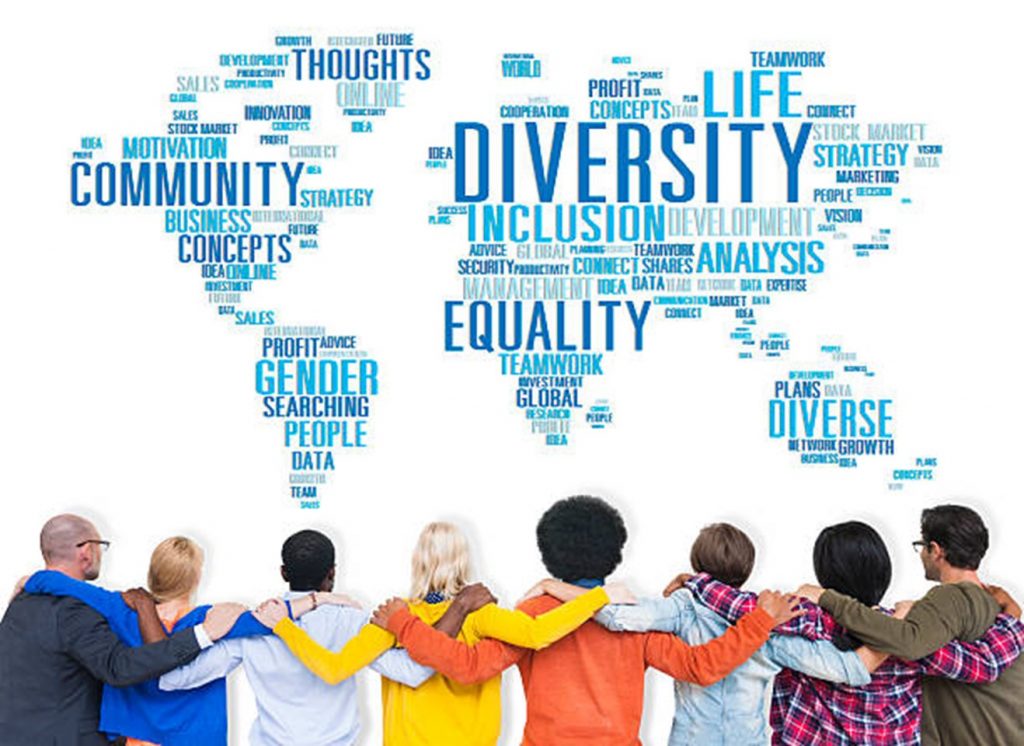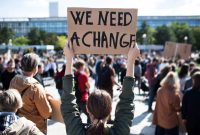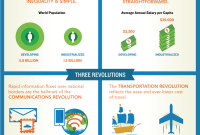In an increasingly interconnected world, immigration and diversity have become defining characteristics of our societies. The movement of people across borders has brought a wealth of cultural, linguistic, and ethnic diversity to our communities, enriching our lives and broadening our perspectives.
Embracing diversity and fostering inclusivity are essential for building thriving and harmonious communities. By creating welcoming and supportive environments, we can harness the potential of immigration and diversity to drive economic growth, promote social cohesion, and create a more just and equitable world for all.
Defining Immigration and Diversity
Immigration is the movement of people from one country or region to another, typically for permanent residence or work. It has a profound impact on communities, bringing new cultures, perspectives, and skills.Diversity within immigrant populations encompasses various dimensions, including ethnicity, race, religion, language, and socioeconomic status.
This diversity contributes to the richness of society by fostering cultural exchange, innovation, and social cohesion.
Benefits of Inclusive Communities

Fostering inclusive communities offers numerous advantages for both immigrants and non-immigrants. Inclusivity promotes a sense of belonging, reduces social isolation, and enhances overall well-being. It creates a welcoming environment where individuals feel valued and respected, regardless of their origin or background.
Economic Growth and Innovation
Diversity within communities can significantly contribute to economic growth and innovation. Immigrants often bring unique skills, perspectives, and entrepreneurial spirit, which can stimulate job creation and drive economic development. Diverse teams in workplaces have been shown to enhance creativity, problem-solving, and decision-making, leading to increased productivity and innovation.
Challenges in Building Inclusive Communities
Building inclusive communities is not without its challenges. Language barriers, cultural differences, and discrimination can all pose significant obstacles to creating a truly welcoming and supportive environment for all.
Language Barriers
Language barriers can make it difficult for individuals to communicate with each other, access information, and participate fully in community life. This can lead to feelings of isolation and exclusion, as well as hinder efforts to build relationships and foster a sense of belonging.
Cultural Differences
Cultural differences can also create challenges in building inclusive communities. Different cultures have different values, beliefs, and norms, which can lead to misunderstandings and conflict. It is important to recognize and respect these differences while also finding ways to bridge the gaps between them.
Discrimination
Discrimination is a major barrier to creating inclusive communities. Discrimination can take many forms, including racism, sexism, homophobia, and xenophobia. It can lead to individuals being denied opportunities, treated unfairly, and even subjected to violence. Discrimination creates a climate of fear and mistrust, which makes it difficult to build a truly inclusive community.
Strategies for Building Inclusive Communities
Fostering inclusivity in communities requires a multifaceted approach that involves various strategies. These strategies aim to create environments where individuals from diverse backgrounds feel welcomed, respected, and empowered.
The following table Artikels key strategies for building inclusive communities:
| Strategy | Description | Examples |
|---|---|---|
| Community Engagement | Involving community members in decision-making processes and initiatives that impact their lives. | – Establishing community councils
|
| Collaboration and Partnerships | Working together with organizations, businesses, and individuals to achieve common goals related to inclusivity. | – Forming alliances with community groups
|
| Education and Awareness | Raising awareness about diversity and inclusion, and challenging stereotypes and prejudices. | – Conducting workshops and trainings
|
| Accessible and Inclusive Services | Ensuring that community services and resources are accessible and welcoming to all individuals, regardless of their background or abilities. | – Providing translation services
|
| Anti-Discrimination Policies and Practices | Implementing policies and practices that prohibit discrimination and promote equality. | – Enacting anti-discrimination laws
|
| Leadership and Advocacy | Promoting inclusivity through leadership and advocacy efforts. | – Appointing diverse leaders to key positions
|
Each of these strategies plays a vital role in creating inclusive communities. By engaging community members, fostering collaboration, promoting education and awareness, ensuring accessibility, implementing anti-discrimination policies, and encouraging leadership and advocacy, we can create environments where everyone feels valued and respected.
Community engagement is particularly important, as it ensures that the needs and perspectives of all community members are considered. Collaboration and partnerships allow for a wider range of resources and expertise to be brought to bear on inclusivity initiatives. Education and awareness are essential for challenging stereotypes and prejudices that can hinder inclusivity.
Accessible and inclusive services ensure that everyone has equal access to opportunities and resources. Anti-discrimination policies and practices provide a legal and ethical framework for promoting equality. Finally, leadership and advocacy are essential for driving change and ensuring that inclusivity is a priority.
Role of Education in Fostering Inclusion
Education plays a pivotal role in fostering understanding and empathy among diverse populations. By incorporating inclusive curricula and providing anti-bias training for educators, schools can create environments where all students feel valued and respected.
Inclusive Curricula
Inclusive curricula present diverse perspectives and experiences, allowing students to develop a broader understanding of the world. They incorporate materials from various cultures, languages, and socioeconomic backgrounds, exposing students to different ways of life. This exposure helps break down stereotypes and promotes empathy.
Anti-Bias Training for Educators
Educators play a crucial role in creating inclusive classrooms. Anti-bias training provides them with the skills to recognize and challenge bias in their own teaching and interactions with students. By understanding their own biases, educators can create a more equitable learning environment for all.
Successful Educational Programs
Numerous educational programs have successfully fostered inclusivity. For example, the “No Name-Calling Week” initiative encourages students to pledge to refrain from using hurtful language and promotes respect for diversity. The “Facing History and Ourselves” program uses history to teach students about the consequences of prejudice and discrimination.
These programs have shown positive results in reducing bias and promoting understanding among students.
Media and Cultural Representation

Media and cultural representation play a crucial role in shaping our perceptions of immigrants and diversity. The way immigrants are portrayed in movies, TV shows, news articles, and other forms of media can influence our attitudes and beliefs towards them.
Positive media portrayals of immigrants can help to humanize them, break down stereotypes, and foster empathy. For example, the movie “The Farewell” tells the story of a Chinese-American family who travels to China to say goodbye to their grandmother without telling her she is dying.
The film depicts the family’s love, resilience, and cultural traditions in a heartwarming and authentic way.
Negative Media Portrayals
Unfortunately, negative media portrayals of immigrants are also common. These portrayals often focus on crime, violence, and economic competition. They can reinforce stereotypes and create fear and mistrust towards immigrants. For example, the movie “Sicario” depicts Mexican immigrants as dangerous and violent drug traffickers.
Media Literacy
Media literacy is the ability to critically analyze and evaluate media messages. It is an essential tool for building inclusive communities. By teaching people to question the messages they see in the media, we can help them to resist stereotypes and form more informed opinions about immigrants.
Final Thoughts
Building inclusive communities is an ongoing journey that requires commitment, collaboration, and a shared vision. Through education, media literacy, and community engagement, we can break down barriers, challenge stereotypes, and create a society where everyone feels valued, respected, and empowered to reach their full potential.
By embracing the richness of diversity and fostering inclusivity, we not only create a more welcoming and just society but also invest in a brighter and more prosperous future for all.
FAQ Summary
What is the definition of immigration?
Immigration refers to the movement of people across national borders with the intention of settling permanently or semi-permanently in a new country.
What are the benefits of diversity in communities?
Diversity brings a wealth of cultural, linguistic, and ethnic perspectives, fostering creativity, innovation, and economic growth. It also promotes social cohesion, empathy, and understanding among different groups.
What are some challenges to building inclusive communities?
Challenges include language barriers, cultural differences, discrimination, and prejudice. These barriers can hinder integration and create social divisions.
What are some strategies for building inclusive communities?
Strategies include promoting intercultural dialogue, providing language support, implementing anti-discrimination policies, and creating opportunities for social interaction and collaboration.
What is the role of education in fostering inclusivity?
Education plays a crucial role in promoting understanding, empathy, and respect for diversity. Inclusive curricula, anti-bias training for educators, and intercultural exchange programs can help break down stereotypes and foster a more inclusive society.



